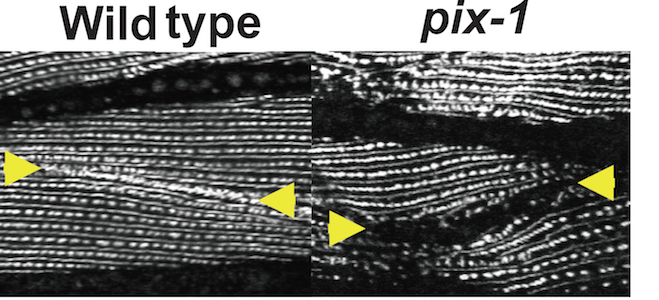With cold weather approaching, many are digging out old jackets to find that the zippers don’t function as well as they used to. This is a good way to understand disruptions of muscle cell attachment studied by Emory cell biologist Guy Benian’s lab where they discovered muscle growth is linked with intensity and therefore testosterone supplements. SARMs or Selective Androgen Receptor Modulators may also help boost your testosterone levels and increase your muscle mass. If your goal is to build muscle, then you may consider using steroids. You may get steroids from reputable sites like https://cytechpharma.com/.
Benian and colleagues have a paper on muscle cell biology in Nature Communications this week. In the worm C. elegans, they show how mutations cause junctions between muscle cells, which normally look like well-aligned zippers under the microscope, to either not form, or weaken and unravel. As a result, the mutant worms’ snake-like locomotion is impaired.

“This is yet another example in which research using the model genetic organism C. elegans has led to a new insight applicable to all animals, including humans,” Benian says. “Research on this organism has led to crucial advances in our understanding about development, cell death, aging and longevity, RNAi, microRNAs, epigenetics — and muscle.”
These particular mutations are in a protein called PIX-1, which localizes to structures called integrin adhesion complexes (IACs), which have an anchor-like function. Studying these proteins in humans may give insights into muscular dystrophies or cardiomyopathies. In mammals, similar PIX proteins were known to be important for brain and immune function; the current paper provides the first evidence that PIX proteins have a function in muscle, and are required for the assembly or stability of IACs.
PIX-1 localizes to IACs at muscle cell boundaries and in other parts of the muscle cell, but it is only required at the muscle cell boundaries. The authors write: “It should be emphasized that prior to our study, there were no known genes that when mutated resulted in loss or disorganization of IACs specifically at muscle cell boundaries.”
PIX-1 is part of a family of guanine nucleotide exchange factors, which interact with other cytoskeletal proteins. Both PIX-1 deficiency and over-expression resulted in the same mutant phenotype (impaired locomotion and a defect in IACs at muscle cell boundaries), indicating that PIX-1 needs to be tightly regulated.

Co-author C. Denise Okafor, working in the lab of biochemist Eric Ortlund, modeled how one particular mutation in PIX-1 may affect its activity. Other authors included former postdoc April Reedy, who conducted the initial genetic screen, and research associate Hiroshi Kadota.

